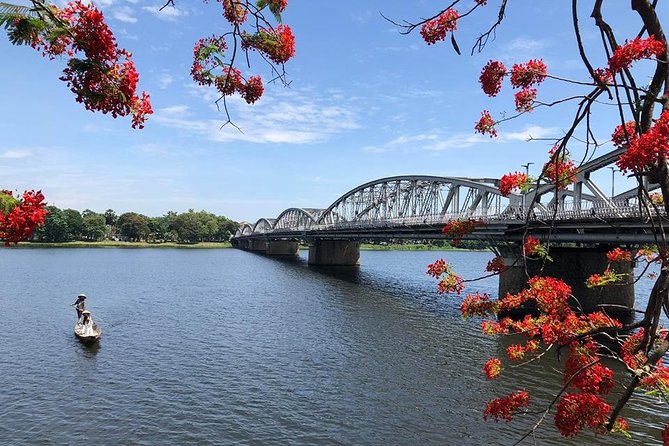Located in Hue, Vietnam, the Hue Citadel, also known as Dai Noi, is a vast complex that served as the political and cultural center of the Nguyen Dynasty. Here is some information about Hue Citadel:
1. Description and Interesting Facts:
- The Hue Citadel is a walled fortress that covers an area of over 500 hectares. It was built in the early 19th century on the northern bank of the Perfume River.
- The architecture of the citadel was heavily influenced by Chinese imperial designs, featuring the use of grand gates, beautiful palaces, and gardens.
- Within the citadel, there are several notable buildings such as the Imperial City, the Forbidden Purple City, and the Royal Tombs.
- The Imperial City is the most prominent part of the Hue Citadel, and it was where the royal family lived and oversaw the court affairs.
- The Forbidden Purple City, located inside the Imperial City, was exclusively reserved for the Emperor, his concubines, and trusted servants.
- Sadly, much of the Hue Citadel was heavily damaged during the Vietnam War. However, efforts have been made to restore and preserve its architecture.
- In 1993, the Hue Citadel was recognized as a UNESCO World Heritage site.
2. Working Time and Contact:
- The Hue Citadel is open daily from 8:00 AM to 5:00 PM.
- Phone: +84 234 3884 383
3. Ticket Info and Transportation:
- The entrance fee to the Hue Citadel is 150,000 VND (approximately $6.50 USD) for foreigners.
- To get to the citadel, you can take a taxi or a motorbike taxi from various parts of Hue. If you are staying in the city center, it is possible to walk to the citadel, depending on your location.
- Guided tours are available for visitors who want a more in-depth experience and historical context of the citadel. These tours can be arranged through travel agencies in Hue.
- Inside the citadel, there is a tram service available for visitors who prefer not to walk the entire area. It allows for easy transportation between the different attractions within the citadel complex.
Visiting the Hue Citadel is a must for history and architecture enthusiasts, offering a glimpse into the rich royal heritage of Vietnam’s past.










